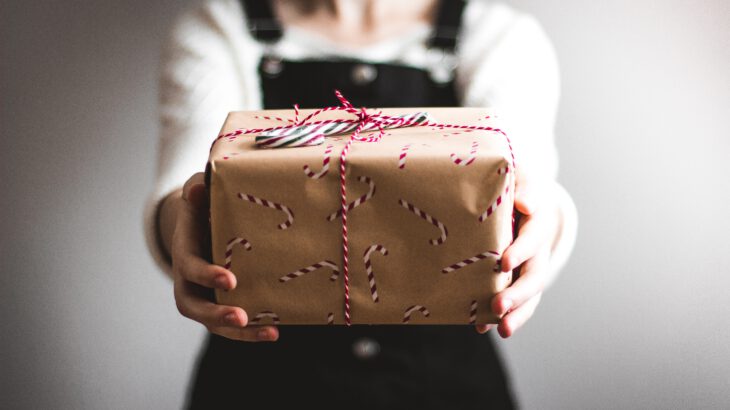Consumerism and Sustainability During the Holidays
When we think of the holidays, we think about gifts. As grown-ups, we mostly think about buying gifts for our family members. Even though there is nothing that we know they might want/need, we might still feel obligated to get everyone a present. But has it always been this way?
The truth is, while the holidays have forever been a time of giving to the ones we love, it wasn’t always an excuse to buy/get everything we wanted. The essence of the holidays is a religious celebration, where family and friends get together and share a good time while being thankful for everything good in life. Nevertheless, ever since the late 19th century, companies have been advertising the ritual of the gift, with the image of Santa Claus being promoted by Coca-Cola later. This slowly created a consumerist tradition around the holidays, which spread from the United States all around the world. Nowadays, every year around December, we get bombarded with advertisements about Christmas, with companies putting out deals and selling lots of Christmas-themed stuff.
Why do we buy so much? Does getting more presents really make us happier? The truth is, a lot of the stuff we get for Christmas is unnecessary, and we would’ve been fine without it. Think about that random towel or a pair of socks your distant relative bought you. We tend to think that the more, the better. This philosophy has stripped the holidays from their original meaning.
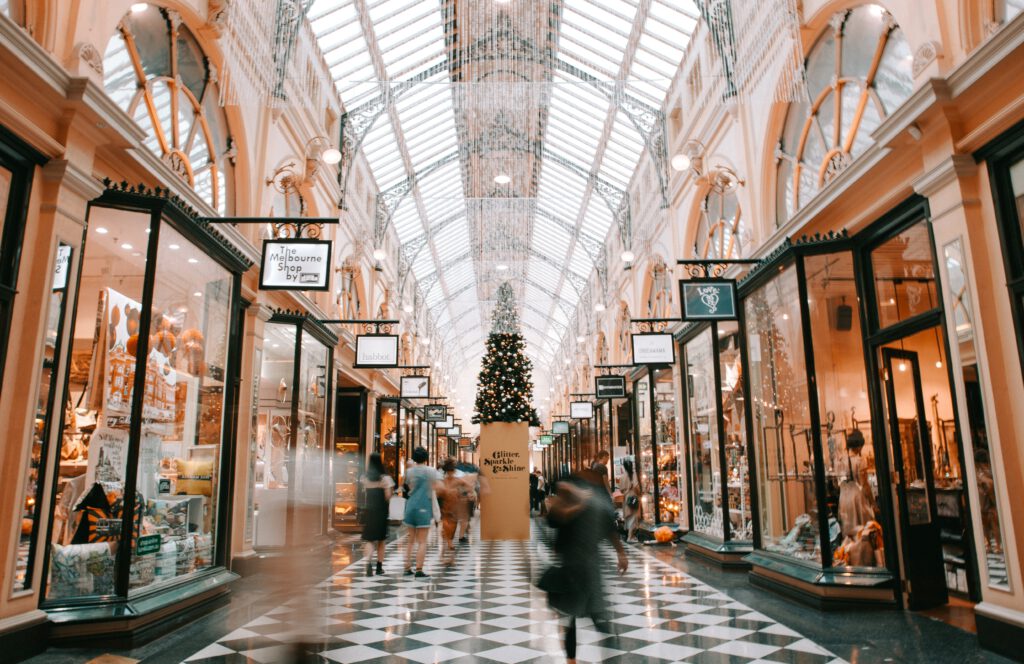
Photo by Heidi Fin from Unsplash
How can we avoid consumerism during the Holidays?
First, I think the idea that everyone must give everyone else a present is unnecessary. This could be avoided by opting for a gift exchange with your family or friend group. That way, everyone buys just one gift, and the gift exchange ritual is very fun. Of course, you are not restricted to one person, you could always get something for your closest family members, like your parents and siblings.
Another way to avoid consumerism is by hand-crafting your gifts, or even baking something nice. Not only is this more sustainable, but also shows the other person that you really care about them, since you invested time and effort in their present.
Finally, avoid online shopping. The amount of pollution that packaging and delivery create can be avoided by just going to a local store. Even better, try second-hand stores, for things like books or even furniture. You can even find cool vintage things there.
And remember, money can’t buy happiness!
Sustainable Gift Ideas
There are three ways to think of a gift as being sustainable: a gift that helps someone go greener, a gift that is produced sustainably, and/or a gift that involves reuse, second-hand, or refurbishment of some sort.
We have selected some wonderful ideas for you including second-hand sources, local products, and lovely experiences for your family and friends who may not be geographically close!
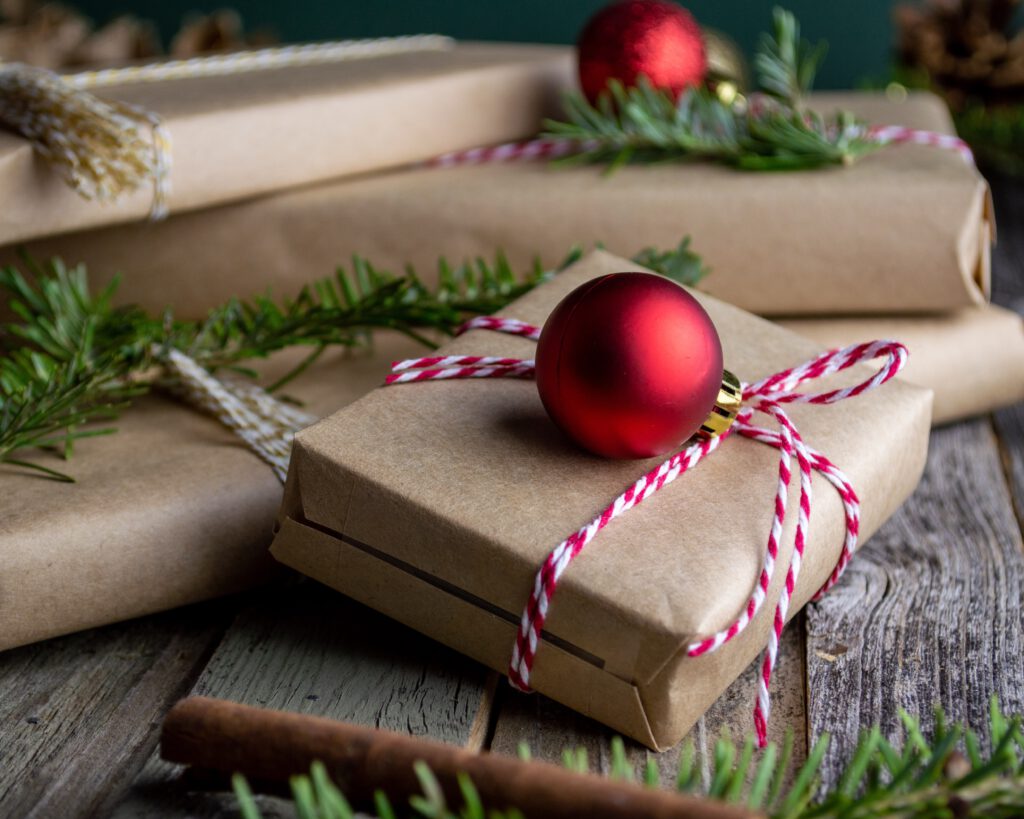
Here are some ideas for giving a second-hand item a new life while also bringing joy to a loved one:
1. Second-hand books, you can often find books in excellent condition in second-hand shops for a cheaper price. Not only can you sometimes find some wonderful editions, but there is nothing quite like curling up in a cozy seat with a good book and cup of tea while it is cold outside.
2. Second-hand clothes or other items such as lamps and other vintage bits and bobs can easily be sourced in Kringloops or online via sites such as Sellpy (an amazing selection of clothes, jewellery, deco, and furniture).
Another sustainable gift for your fellow foodies/unique product lovers out there:
Create a hamper filled with local produce. Wageningen offers some fantastic options for this, even if you are not spending Christmas here. The Saturday market (especially the Streekwaar stall) has many lovely products, ranging from beeswax candles to local, organic cheese. There are also a few shops such as de Gieterij in Wageningen, which offers colourful aprons and dish towels made by a Ghanaian cooperative as well as some beautiful candles that are locally made from wax scraps. plenty of low-waste natural beauty products to keep you smelling wonderful and your skin healthy in this cold weather. The many farm shops around Wageningen such as the Hoge Born (right next to campus!) and the Bee House offer a gorgeous selection of local preserves, honey, and other locally-made products!
Some lovely, affordable ideas to surprise someone who is not geographically close to you:
1. Go to your favourite café and ask the staff there for a package of the coffee beans they’re using. The idea is to then gift these to someone who does not live near you and make them feel like they are drinking the same coffee as you. As if you’re sharing a cozy moment together.
2. Create a beautiful voucher for a trip to your town with a QR code attached. The QR code leads the person to a Google Maps list of the places and things they will do together while there. This adds a personal touch and is something wonderful for both of you to look forward to.
3. Make a little photo book with your favourite snaps and write some stories to each photo about the memories you shared.
Some tips for those who love new experiences and/or who have caught the travel bug!
1. A local Wageningen experience to bring someone closer to the land and to nature could be to gift them a gardening/farming workshop with Lichtveen market garden or a foraging workshop with a local guide where you can learn about fungi and edible herbs.
2. A ticket to an environmental festival could be a cool way to experience wonderful music, human connection and learn about environmental initiatives in the area. A couple of examples include Medicine Festival, LoveJam Campout, Green Man Festival.
3. Why not challenge some friends to go flight free in 2023 and inspire them with a train journey to an exciting destination? With a quickly expanding night train network, train travel is becoming a great option to not only skip those huge carbon emissions, but also those big airport queues! There is now even a new night train that takes you all the way to Zagreb, Croatia!
Wrapping paper alternatives
Every year, you and everybody else are often left with a huge mountain of wrapping paper that has only been used once. Often this paper is just thrown away and is frequently not recyclable because of toxic inks, plastic lining, and the use of Sellotape.
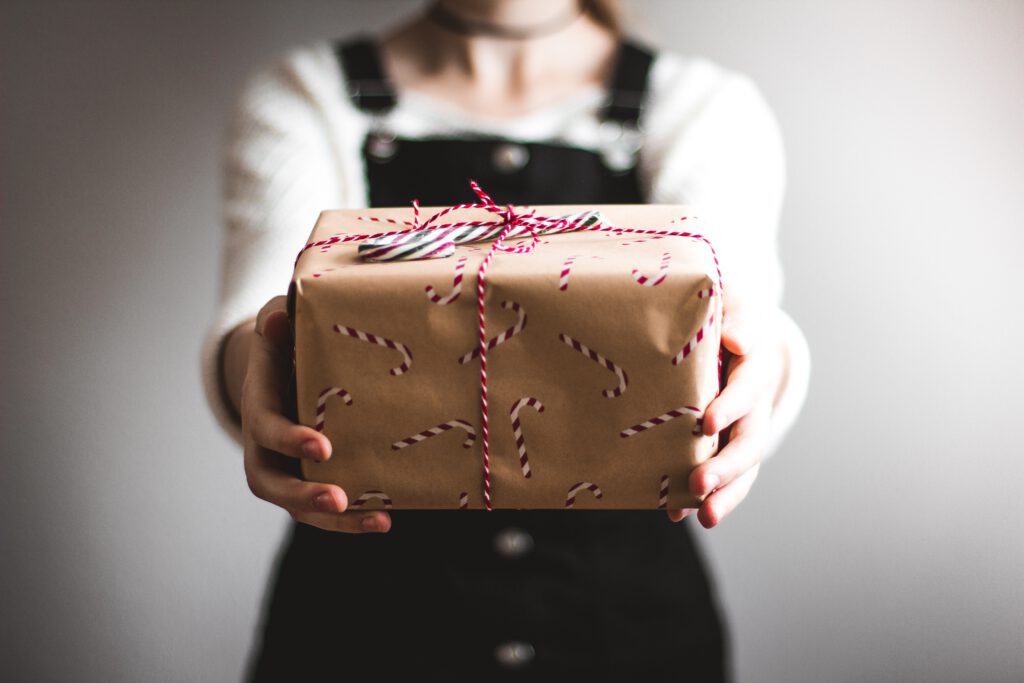
Four simple sustainable gift wrap ideas
Newspaper: Everyone often has old newspapers or magazines lying around that sooner or later end up in the recycling bin. We got you! These old papers can give a unique touch to your gift: a funny newspaper headline, a cool photo, or even the sudokus you find in the back. So not only are you giving the paper another use, but you are also creating a wonderful gift-giving experience. Finish with a cool ribbon and a nice name tag… et voilà. Bonus points if your ribbon is sourced second-hand! Extra tip: You can also pass on a unique message by crossing out words in a newspaper article and making a nice sentence with the remaining words. Touching or funny, either way, an original touch!
Reused Wrapping Paper: Another possibility is to just reuse wrapping paper. Either by not using any Sellotape and wrapping the paper with clever folding and string or you could also ask the people opening your gifts to do it as carefully as possible. Often the paper or parts of it retain their quality and can be reused. You can then save the paper for the next years to come. Not only does this reduce the amount of paper ending up in landfill and incinerators but it also reduces the cost for you since you will not have to buy new wrapping paper every year!
The Good Roll: Have you heard of the good roll? They produce 100% tree-friendly and sustainable toilet roll. Now we are not suggesting you wrap your gifts in toilet paper. On the contrary! The toilet rolls from The Good Roll are all wrapped in beautiful, fun papers with a super cheerful print. They fit perfectly around smaller gifts! Sustainable and unique: it couldn’t be better, could it?
Because not only do the nice prints on the packaging make the Good Roll a sustainable gift-wrapping choice. The Good Roll’s toilet rolls contribute to a better world because they finance the building of toilets with part of their profits. This will finally give people easy access to personal hygiene facilities.
In addition, not a single tree falls for the toilet rolls, their packaging, or their shipping boxes. These are all made from recycled paper. And if we order them? Then the truck only leaves when it is completely full! This way no unnecessary vehicles drive onto the roads.
Furoshiki/Fabrics: Is paper not your thing? Then go for fabric! Furoshiki is a Japanese wrapping method that uses fabric. By tying it in a fun way, you get original packaging, of which the recipient can simply reuse the fabric!
Furoshiki is a Japanese wrapping method that is still widely used. In Japan, various objects such as boxes, but also watermelons (yes, really!) are packed in this way. By tying your cloth in a specific manner you can make a bag with handles, but you can also wrap a gift in this way. With furoshiki, wrapping is done with cloth instead of wrapping paper. This method is therefore a perfect alternative to paper: it is simple and sustainable. By not using paper that is often only used once, the waste mountain becomes a bit smaller again. this way you can easily contribute to a sustainable Christmas!
Choose a calm colour or a bright print: your gift has never been wrapped so beautifully! The pieces of fabric can be used again later to wrap other gifts or for another fun DIY project. So, circular all the way! You can easily find fabrics in your own home such as old scarves and towels, or there are plenty of beautiful second-hand fabrics that can be found in second-hand shops. Other alternatives include buying materials from a zero-waste shop or cooperatives which use non-toxic dyes, or you could even dye your own linen and cotton cloths using avocado peels or onion skins, for example.
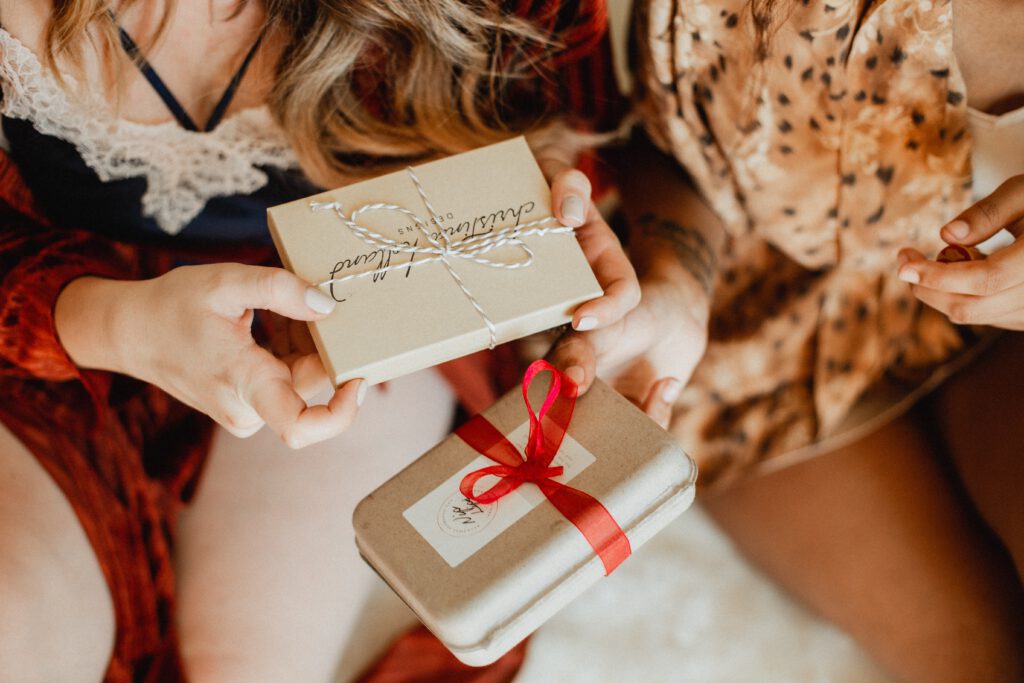
Furoshiki instructions: the Otsukai Tsutsumi knot
1. Lay your piece of cloth on the table in the shape of a diamond, and place the box right in front of you in the centre of the cloth (so that they are overlayed). Fold the top point over the box, and tuck the excess under it.
2. Do the same with the bottom point: fold over the box and tuck the excess under it.
3. Make a tight knot on top of the box with the remaining right and left points.
Imagine a world where everyone wraps their Christmas gifts sustainably. How different would the Christmas footprint be…?
Written by: Luana Garcia & Laura Wilson
